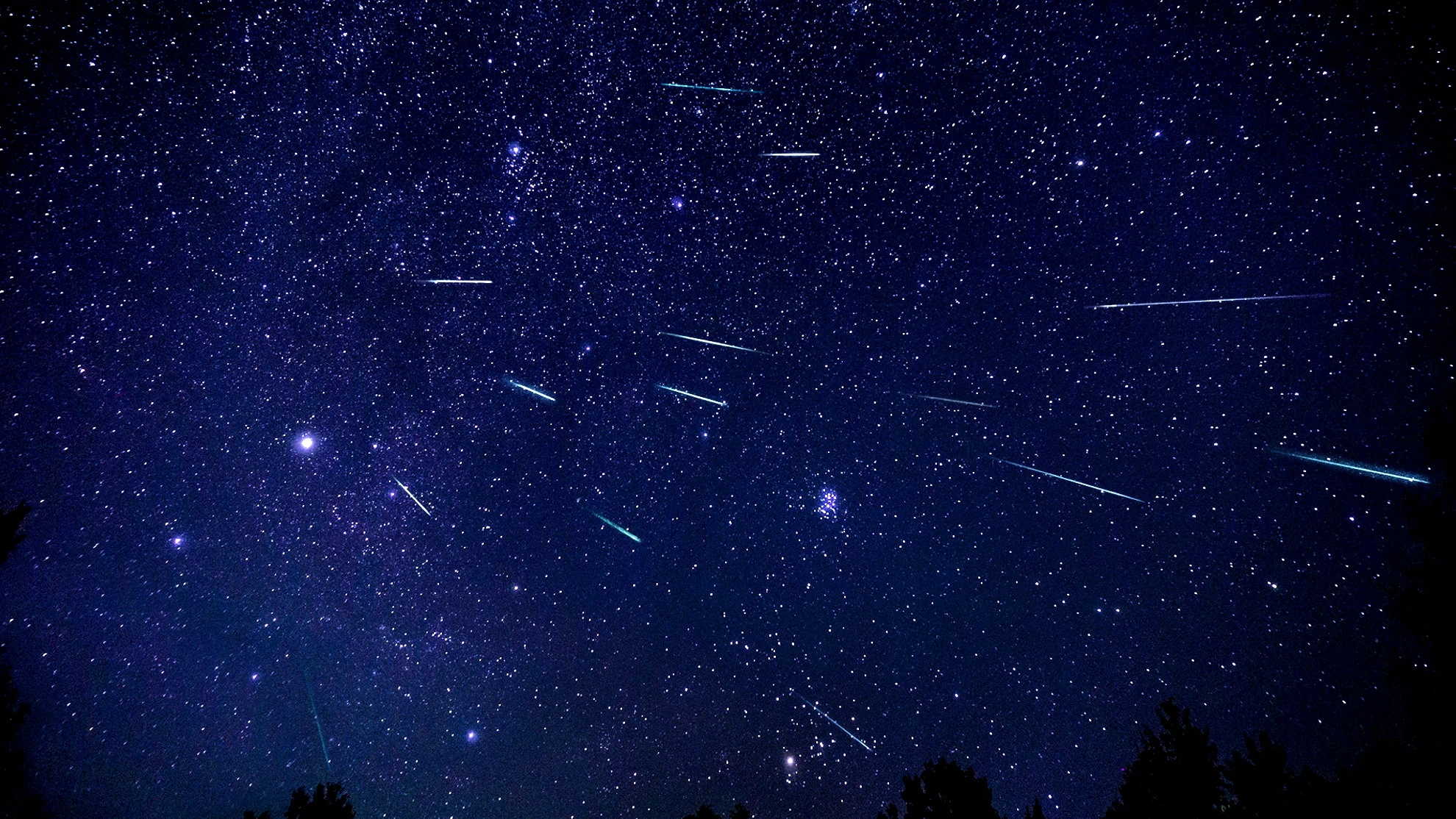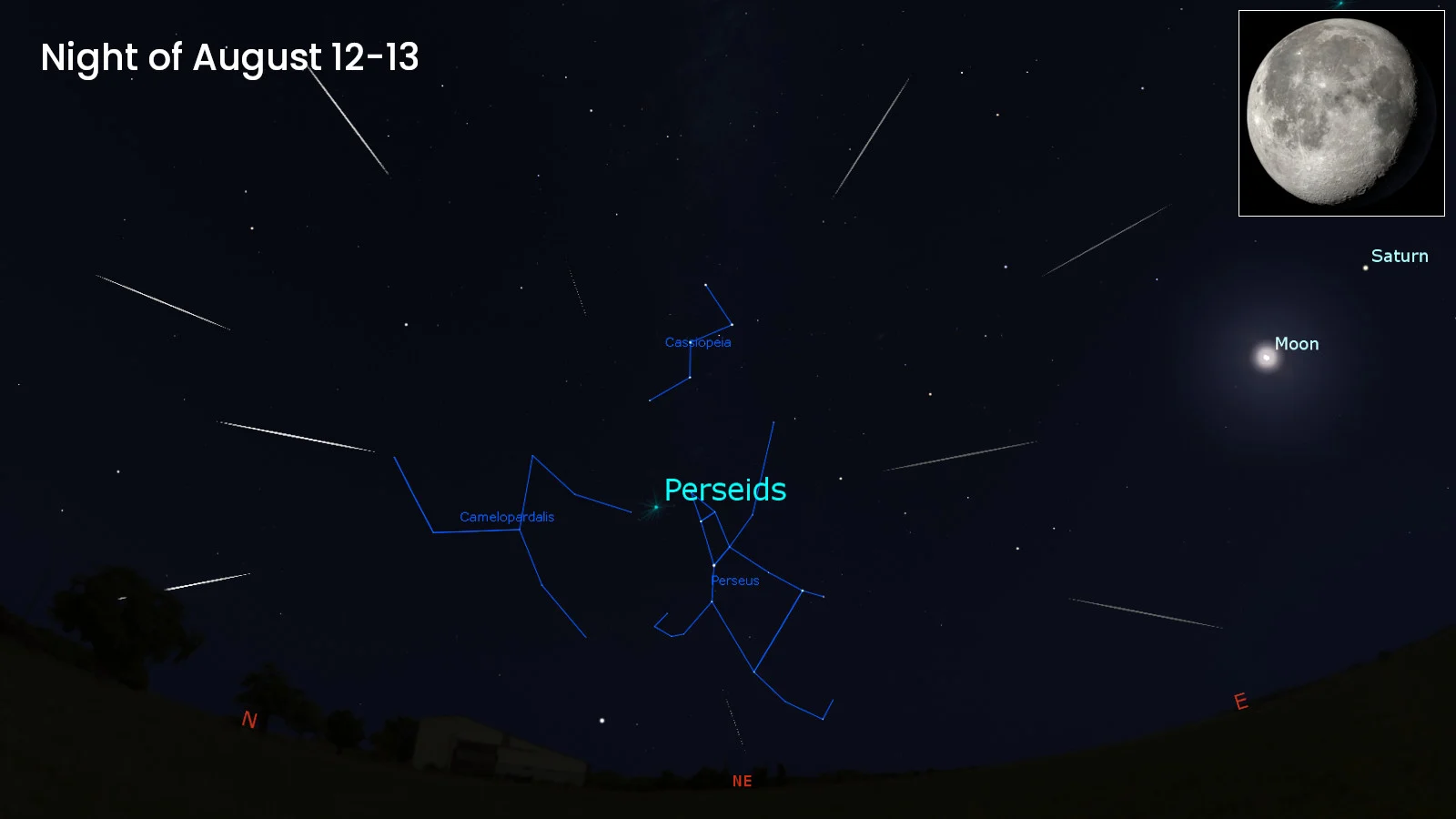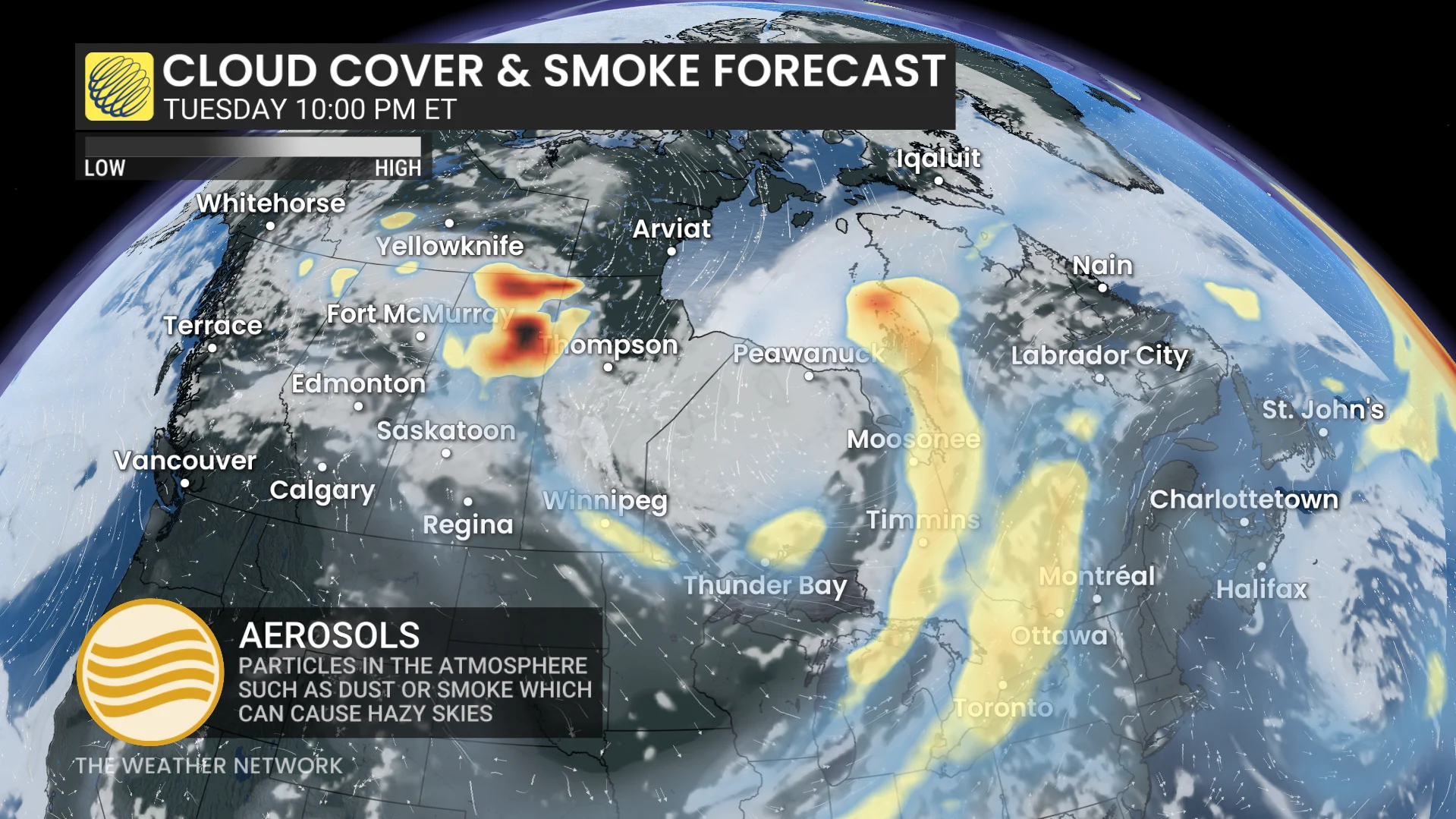
Look up! The Perseids peak Tuesday night
Eyes to the sky for one of the best meteor showers of the year.
The Perseid meteor shower is peaking! So, check your weather forecast for clear skies and find somewhere dark to watch from, to get the most out of this annual spectacle of lights in the night sky.
Right now, our planet Earth is passing through a stream of dust and ice in space, left behind long ago by a 26-kilometre-wide 'dirty snowball' known as Comet Swift–Tuttle.
The comet itself is billions of kilometres away from us at the moment, far out past the orbit of Neptune. It was last seen in the inner solar system in 1992, and is not due to swing back through this region of space again for another 100 years. However, this stream of meteoroids from Swift-Tuttle gives us a yearly reminder that it is out there and will eventually return.

Earth intersects the debris stream of Comet Swift-Tuttle on the night of August 12, 2025 in this simulation of the inner solar system. (meteorshowers.org)
As we cross through Swift-Tuttle's debris, Earth's atmosphere sweeps up the tiny meteoroids directly in our path.
Travelling at close to 60 kilometres per second (216,000 kph), these grains of space dust (along with the occasional piece of gravel) streak across the night sky as the Perseid meteor shower.
The Perseids began this year on July 17. The shower started off slow, as usual, only producing a handful of meteors per night. It then slowly ramped up throughout the latter half of July and into early August.

The radiant of the Perseid meteor shower, in the northeastern sky, on the night of August 12-13, 2025. Inset, top right: the phase of the Moon on that night. (Scott Sutherland/Stellarium/NASA's Scientific Visualization Studio)
On the night of Tuesday, August 12, we reach the deepest, most concentrated part of that stream. This is when the Perseids reach their yearly peak.
“The average person under dark skies could see somewhere between 40 and 50 Perseids per hour,” Bill Cooke, the head of NASA's Meteoroid Environments Office said on the agency's website.
That number is roughly half the 100 meteor per hour "Zenith Hourly Rate" that is officially attributed to the Perseids. However, Cooke's estimate is a realistic expectation, taking into account the limits of what the human eye can see in the dark, and how we can only focus on a relatively small portion of the sky at any one time.
How to watch the Perseids
Ideally, the best place to watch the Perseids is from a 'dark sky preserve' under clear weather conditions, with no moonlight in the sky. Rural areas, away from urban light pollution, can also offer great views. Even the parking lot of one of the many provincial parks across the country could be an excellent place to set up for the show.
For those who cannot find those ideal conditions, follow these tips to get the most out of the Perseids:
Find a safe, reasonably dark area, even a backyard or nearby park, where your view is sheltered from nearby streetlights and a direct view of the Moon. Pick somewhere you can see at least a dozen stars above your head.
Give your eyes about 20 minutes to adjust to the dark. Avoid looking at light sources, even your phone, during this time.
Even though Perseid meteors can be traced back to the northeast section of the sky, the meteors actually show up anywhere overhead. So, look straight up, to take in as much of the sky as possible at once.
Go out later in the night, especially in the hours after midnight, when the meteor shower 'radiant' is higher in the sky.
Keep the Moon out of your direct line of sight, to avoid its effects on your night vision.

(NASA's Scientific Visualization Studio)
READ MORE: How to get the most out of meteor showers and other night sky events
This year, the phase of the Moon adds an extra challenge to viewing the Perseids.
The Waning Gibbous Moon rises around 10 p.m. local time, and will be up for the rest of the night, adding its bright light to the sky. This moonlight will 'wash out' some of the dimmest meteors, leaving only a smaller number of brighter meteors for us to see. This is especially true on a humid August night, when the extra water vapour in the air will catch and reflect some of that moonlight into our eyes.
However, most of the 'harm' done by urban lights and the Moon is their direct effect on our eyes' ability to adapt to the dark. Simply turning our backs to them, or using nearby trees and buildings to keep these light sources out of direct line of sight, can help. Even holding up a hand to block them from view can be enough to improve our chances of spotting the brief meteor flashes in the sky.
Overall, observers who maximize their potential for seeing the Perseids could see, on average, one meteor every couple of minutes.
On the 'bright side', those meteors that do pierce through the ambient light could be the most memorable — potentially blazing long paths across the sky as fireballs.
Watch below: Perseid fireball captured by NASA all-sky camera
Will we see them?
Having at least reasonably clear skies is paramount for watching a meteor shower. Here are the expected cloud conditions across Canada, overnight Tuesday night into Wednesday morning.

Sky conditions are expected to change throughout the night, as this look from a few hours later reveals.

Included on these forecast maps is the likely extent and thickness of wildfire smoke across the country, as this can also impede our view of the night sky.
Check and recheck your local sky forecast to ensure that you time your outing to see the Perseids right.
Not just the peak
Although the night of the 12th-13th is when the Perseids peak, that's not the only night we can see these meteors.
Tonight, on the night of August 11-12, meteor numbers will be quite good, at about 20-30 meteors per hour, which is comparable to a moderate meteor shower. However, the Moon will be slightly brighter than on the night of the Peak. Thus, we might see a meteor every five minutes or so, but possibly more.
Although their numbers will be diminishing, for at least a couple of nights after the peak, we could still see around 20-30 per hour. As a bonus, though, with the Moon approaching its Last Quarter phase, it will be rising later and casting a bit less light across the sky each night, making it easier to see more of the meteors shining through.

DON'T MISS: An alien comet is now passing through our solar system. Here's what we know
After this week, the Perseids will continue right up until the 24th, when Earth exits the debris stream of Comet Swift-Tuttle.
The number of meteors will be substantially reduced during that last week of the shower. However, with the Waning Crescent Moon rising after midnight and only shining dimly in the eastern sky, patient observers could still spot a handful of Perseids each hour on those nights.
(Thumbnail image is a composite of the 2021 Perseid meteor shower, captured from New Brunswick by Brad Perry, who uploaded the image to The Weather Network's user-generated content galleries.)
